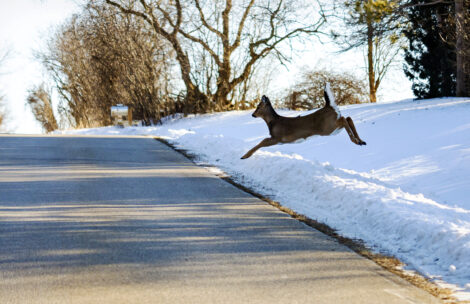CPW: Snow can bring wildlife to the road
Average property damage cost of wildlife crashes is estimated at over $3,000
CPW PRESS RELEASE
November 6, 2025
November is the peak rutting season for many types of Colorado wildlife and the peak month for wildlife crashes across the state. Last year, there were 530 wildlife crashes in November, with 98 percent of those being property damage only. Yet, November also brings another factor that increases wildlife encounters for motorists – snow.
“Measurable snow season usually reaches the lower elevations of our State by the end of October or mid-November, and this can increase collisions with wildlife migrating or seeking a little relief from the colder, snow-covered ground,” explained Col. Matthew C. Packard, chief of the Colorado State Patrol. “This is particularly true with pronghorns on the eastern plains.”
Wildlife-vehicle collisions can be very costly to drivers. According to the Rocky Mountain Insurance Information Association, the insurance industry pays nearly $1.1 billion yearly in claims for all wildlife collisions nationwide. The average property damage cost of these crashes is estimated at over $3,000.
Two of the most essential things a motorist can do are to drive the speed limit and use their high beams when not around other motorists in rural areas or neighborhoods adjacent to open space areas. Increase your chances of seeing wildlife crossing up ahead or on the side of the road by staying alert. You can give yourself the time to adjust your speed or stop if no one is behind you.
While no one wants to harm an animal, causing a more serious crash with oncoming traffic or vehicles behind you can lead to serious human injury and death.
If you are involved in a crash with an animal, Colorado State Patrol wants you to call 9-1-1 just as you would in any other emergency. In addition, if you witness wildlife in distress from possibly being struck on or near the side of the road, call *CSP for the proper resource to be notified and sent to the scene.


